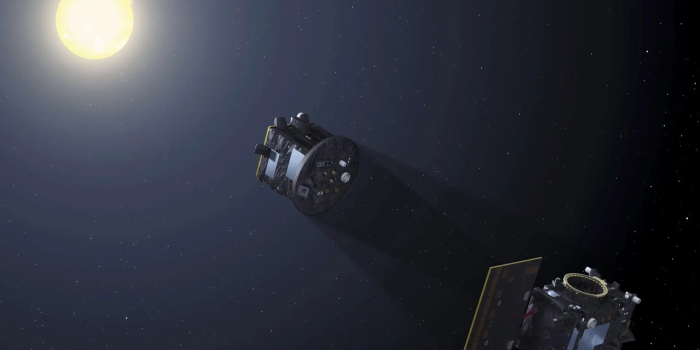The April 8 solar eclipse offered scientists a unique opportunity to investigate the Sun’s fascinating corona, which is usually hidden by its intense radiance. However, an innovative endeavor by the European Space Agency is poised to revolutionize our understanding of this mysterious solar environment.
The goal of the new Proba-3 mission is to simulate an eclipse in space so that in-depth research of the Sun’s corona may be conducted over an extended period. The project, which consists of two satellites, can precisely position itself and replicate a natural eclipse’s impact because of its ingenious design.
“The two spacecraft will act as if they are one enormous 150-m long instrument,” explained Dietmar Pilz, ESA’s Director of Technology, Engineering, and Quality, emphasizing the technical intricacies involved.

To prevent direct sunlight from entering the coronagraph and allow it to view the corona without interference, the occulter satellite will strategically place itself between the Sun and the coronagraph during the mission. The planned dance between the satellites will take place at a height in orbit of around 60,000 kilometers, so atmospheric and gravitational forces will not cause too much disruption.
With the Proba-3 mission, each of its almost 19-hour and 36-minute orbits will offer chances to produce six-hour artificial eclipses. This prolonged tracking period may solve long-standing questions about the Sun’s corona, notably its mysteriously high temperature of up to two million degrees Kelvin.

The Association of Spacecraft for Polarimetric and Imaging Investigation of the Corona of the Sun, or ASPIICS, the mission’s primary instrument, will collect priceless data that will shed light on the dynamics of the solar atmosphere. Proba-3 seeks to attain the millimeter precision required for scientific purposes by utilizing precise positioning technologies, including inter-satellite communications and satellite navigation.
Studying the Sun’s corona is essential for reasons other than just scientific interest since it affects space weather occurrences. Satellites and communication networks are among the terrestrial infrastructures that can be impacted by coronal mass ejections and solar winds produced by the corona.


